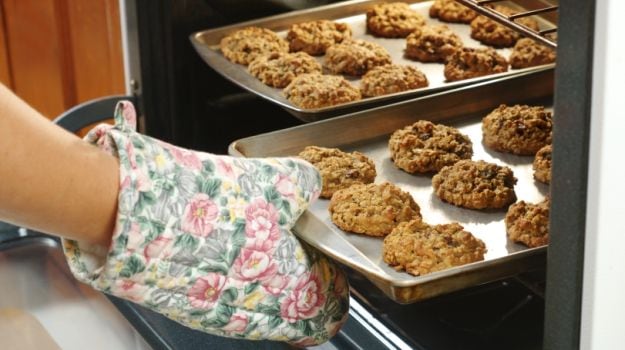Love the smell of a batch of freshly baked cookies? Can't help but ogle endlessly at the baking video tutorials on social media? Yet, each time you try your hand at baking, do you always end up with split cookies, overdone brownies and unshapely cakes? You had all the ingredients, you followed the recipe, yet why is it that your dish doesn't even remotely resemble the one on TV or the internet? The secret to the mystery can lie in the equipment used, or technique or even the measurements. Here are 10 tips to churn out better baked goods.
1. Preheat The Oven
Most recipes you read will always tell you at the very start to preheat your oven. Heed to it. Preheating becomes especially important with baking if you are using yeast, baking soda and baking powder as leavening - as they react to heat. Also, food cooks faster in a preheated oven. Don't mess with the oven temperature and cooking time mentioned.

2. Follow The Recipe Verbatim
(Also read: 8 Ways to Use Soda For the Most Common Skin Problem)
A minute error might be ruining the deal completely for you, especially if you are an amateur. It's very important that you are familiar with the recipe before beginning the process. Read it two or three times to make sure everything is clear, and follow the recipe as is. Substituting ingredients without knowing the science may lead to disasters. It's a common belief that applesauce can substitute oil when baking, but do note, that this would alter the texture and taste of your baked goods if the other ingredients are not taken in the right measure.

3. Minimise Opening the Oven Door
The general rule of thumb when it comes to baking is patience. While we understand it's hard to resist oneself to open the oven door and check on your baked goods, it's also important to note that this urge will make the oven lose its heat and the temperature will fluctuate. Control the number of checks and keep it to bare minimum.

4. Sifting Your Dry Ingredients
Sifting dry ingredients improves the overall texture, and even gets rid of the nasty flour lumps, which spoils your overall cake experience.

5. Add Eggs One by One, To Whip Them Easily
(Also read: 6 Best Egg White Recipes)
It is advisable to add eggs one at a time, instead of all at once. It is not only easier to beat, it also prevents your mixture from being lumpy. To whip egg whites, use glass or metal bowls over plastic.

6. Grease Your Pans Generously
Nothing can be worse than seeing your cake sticking to your pan after having put an hour into baking. Non-stick bakeware isn't foolproof, so it's important to grease every nook and cranny. Make sure you butter, oil or flour your pans unsparingly. This is definitely not the place you would want to be stingy if you are looking to avoid a sticky deal post baking. One can also try lining the bottom of the pan with waxed or parchment paper.

7. Ensure The Butter Is At Room Temperature
Do ensure your butter is at room temperature for successfully creaming butter and sugar. Some would advise cutting the butter in small pieces and heat them mildly in oven, but this needs discretion. Sticking butter in the microwave may seem to be a convenient option to soften the butter, but overly soft butter would not cream properly with sugar and will make cookies spread thin while baking.

8. Let Your Baked Good Cool Down Completely Before Unmolding
Yes, you cake is ready and you cannot wait to just dig in, but it is not advisable to unmold fresh-out-of-the-oven baked goods. Let them cool completely, allowing the steam to evaporate which makes them easier to handle.

9. Don't Overcrowd the Oven
Your oven might be having room for it, but too many pans in the oven can affect the cooking time and also hamper even heat distribution. Ensure that your pans have at least a few inches of distance between each other and and the sides of the oven.

10. Switching Baking Powder for Baking Soda
They might be serving the same purpose and also resembling each other in looks, but you can't just substitute one for the other without knowing the science behind it. Baking soda requires an acidic ingredient to be activated while baking powder already has the acid included. Switching the two can bring about the change in taste and rise of your baked dish.

So now that you have the basics in place, turn up the heat, keep this tips in mind and bake like a veteran. Happy baking!
About Sushmita SenguptaSharing a strong penchant for food, Sushmita loves all things good, cheesy and greasy. Her other favourite pastime activities other than discussing food includes, reading, watching movies and binge-watching TV shows.






